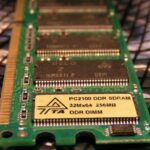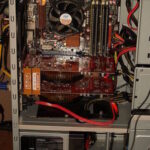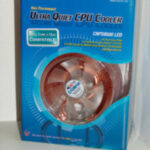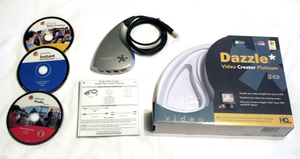Mother board or main board – The mother board is the largest circuit board in the PC and all other boards and devices including power connect to it either directly or indirectly through other hardware. The mother board contains circuits that are permanently attached as well as slots and plugs for other devices to physically connect.
Memory – your computer uses various types of memory to function. Information is stored in memory and passed on to your computer’s processor or CPU (Central Processing Unit) for work to be done.
Some common types of PC memory are: Random Access Memory (RAM), ROM, Hard drive, Firmware.
Firmware is a type of electronic chip whose information is updated using specialized equipment and processes. Generally firmware is used for the most basic computer functions and is seldom changed or updated.
RAM is described as non-static or volatile memory. If the power goes off, its information is lost. RAM is basically an integrated circuit and has no moving parts. This makes it very fast in that information is moved at the speed of electricity over the circuit.
The amount of information stored in RAM is relatively small compared to what is stored on the hard drive or CDs, DVD, Tape, etc.
The benefit of RAM is that it can pass information very quickly.
As you use your computer, RAM fills up with the information you most recently accessed. If your computer asks for this information again, the RAM can quickly fill the request. There is no rollover so-to-speak with RAM. Once it is filled up the oldest memory is discarded and the rest shifts to make room for the new.
It is not unlike cleaning up your voicemails on your cell phone when it is full. You generally keep the newer messages but discard the older ones.
Hard Drive – Thehard drive is the memory device that holds the bulk of your computer’s information (software, applications, drivers, etc.) and generally for long term compared to RAM. The information is stored on platters or discs inside the hard drive. These discs constantly spin while the PC is turned on. A mechanical arm moves a magnetic head over the spinning platters to retrieve information. This information is then sent to the RAM and on to the CPU.
Hard Drives are much slower than RAM but also much cheaper to manufacture. This is why you can have such large capacities compared to that of RAM.
An analogy I like to use to compare RAM and your hard drive is by imagining your brain is RAM and the hard drive is a book you are reading. If you are asked a question that you do not already know the answer to you will have to search the book which takes some time. Once you know the answer though you don’t have to go back to the book to retrieve it again. Unless you have bad short term memory. J
The only difference is that the RAM has a very low limit to how much info it can hold at once.
CDROMs (Compact Disc Read Only Memory) are plastic discs that hold information written to them using a special laser or light. The main benefits of CDs and DVDs are that they can hold large of amounts of information and are interchangeable between most PCs.
There are also ROMs made up of integrated circuits. They are mainly used to hold information that does not change and is used over and over again. Many CDs are no longer read only but the abbreviated name has forever been attached.
Your PC’s Processor is really just a glorified bundle of switches that depending on the combination of their positions “on or off” creates a code or language that is common through out most computers and applications. The more switches, the faster or more “powerful” the CPU.
Built onto most motherboards is a chipset which are more bundles of integrated circuits that are in place to assist the processor in its work.
Video Card – A video card serves two main purposes. One is to interface or connect your display to the computer through a special physical connection. The other purpose is to take the load off of the CPU by processing the video signals instead of having the CPU do it.
Modem – the word modem was primarily associated with communications over a regular, analog telephone line. The signals which started as analog were modulated by one modem then sent over the phone line and demodulated by the corresponding modem.
Other devices like DSL routers have borrowed the name modem but they are not true modems.
Network Interface Card (NIC) – like the video card and modem, the NIC serves two purposes. One is to physically connect your computer to a network and the other is to process network traffic and take the load off of the CPU.
Operating System(OS) – Up until this point, all of the items I just mentioned are considered computer hardware. You also heard a little about firmware and I hope you are familiar with software. Your operating system is a very specialized suite or package of software that communicates with and controls every aspect of your computing experience. The OS is a topic that is beyond the scope of this article.
I hope this helps you to understand the basic components of a personal computer. Stay tuned for more information!






